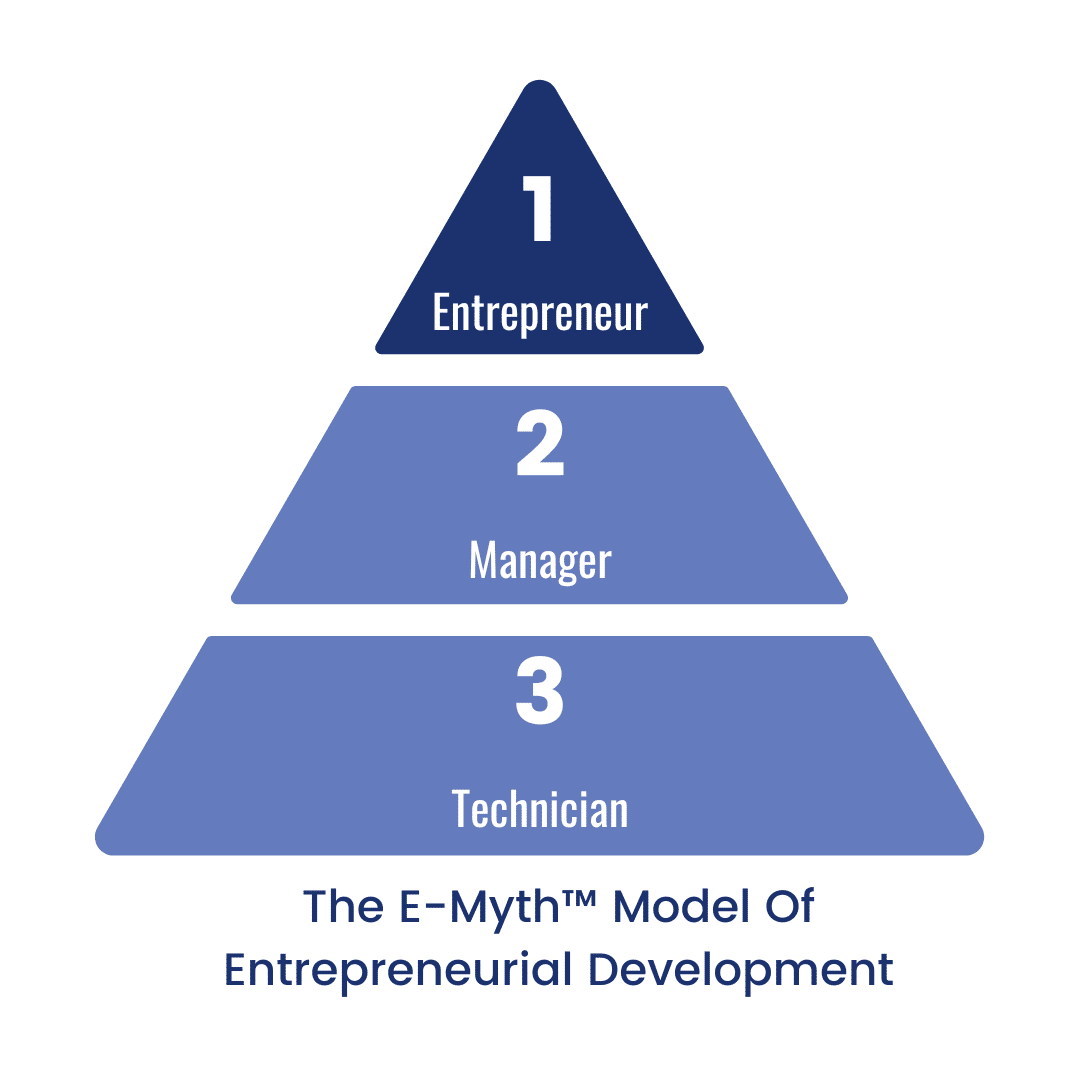Sometimes we get so caught up in producing work, that we don’t take time to step away and think about our business as a whole. We spend so much time working IN the business that we don’t work ON the business.
So what does it mean to work ON the business? It stands to reason that if you are busy creating product your business is profitable. But are you really? Have you taken the time to dissect your business to see how it’s functioning? Is it cost efficient? To help you understand what we mean we’re going to talk about some of the points from Michael Gerber’s book: The E-Myth Revisited.
E-Myth
First let’s identify what Gerber means by the E-Myth. This is that entrepreneurs start most businesses. The reality is that a lot of businesses are started by people who enjoy doing the tasks – whether it’s someone who really enjoys baking and decides to open up a bakery, or in our industry, someone who enjoys doing embroidery who decides to start a home-based embroidery business. These aren’t the people who are thinking/planning to have a business in every major city, they’re simply looking for a way to make their passion or hobby something they can do full-time, and be mildly profitable at the same time.
Chances are most of these people have never run their own business before. But often they make the mistake in thinking that because they understand the work/product, they’ll understand the business. And this is often where most businesses can begin to fail.

In business you need three types of people: the Technician to do the work, the Entrepreneur to have the long-term vision for the business, and the Manager who makes sure the business runs smoothly. The same person can actually do all three roles; but that person must be aware of the different roles and must separate themselves from each role and focus on one at a time. And must give equal focus to each role. Often when one person takes on all three roles they’ll tend to be 70% Technician, and only 20% Manager and 10% Entrepreneur. This means that their managerial side only comes out when something goes wrong and they’re being reactive, and their long-term vision is limited.
How do you work ON your business?
The technician’s role to make the embroidered clothing is important – if they’re not there to make the product, there’s no income. But where do those orders come from? If you’re only focusing on your technician role there’s two things that can happen:
For the next section, we’re going to assume that you’re always busy, so you don’t have time to grow your business and take on new customers. When this happens Gerber suggests you have four options:
- Go small. Chances are when you first started your business the idea was to get away from whatever job you were at before, to allow you more freedom and control of your time. If you’ve now found that you’ve got so many customers and orders that you’re working 10 hours a day, 6-7 days a week, that might not be what you’re looking for in a business. You may need to decrease the number of clients you have, and perhaps increase the pricing to make up for the difference in profit.
- Go for broke. Go for broke means you working harder and harder until you have the capital to make a major change – hiring another person, getting more equipment, renting a larger space.
- Hang in there. Hanging in there isn’t a great option, to be honest, it just means you continue to do what you’re doing, even if that means putting in 1 60-70 hour week, all by yourself. By doing this though, your business isn’t going to grow, and chances are you’ll get burned out.
- Think of yourself as a franchise. Franchises benefit from having systems in place that are the same at every single location. This is how McDonald’s came to be so successful – they broke apart the business, wrote everything out step by step and duplicated it. So you can expect the same thing at any McDonald’s you walk into. In terms of your business you want to take a look at all the roles in your business and break them out as if separate people were responsible for each one.
We want to go into option 4 deeper, because we believe this is what sets successful businesses apart, and is truly important for long-term success.
Even if you are the sole person in your business what are all the roles you take on?
- Technician
- Customer Service/Support
- Sales Person
- Accountant/Bookkeeper
- Marketer
- Artist/Designer
- Manager/Administrator
Depending on your business and the products you offer you may have all of these roles and more. Think about these roles as being separate people, and write out what each role is responsible for. If you were to hire someone to be your Customer Service Rep what is their job description? What kind of qualifications would they need? What are their day-to-day responsibilities?
If you have all these things written out, you can then start to consider whether to outsource some of these jobs. When you really sit down to think about some of them, you may realize that a certain job may take you 3 hours to do, but if you ire someone else, who’s specialty it is, it make only take 1 hour. So while you’re paying someone for 1 hour of work, you’ve just gained yourself 3 hours to be making product.
Steps for success
Gerber breaks down working ON your business into 7 steps.
- Primary aim. What is the goal of your business? How big of a business do you want? What are your personal goals? DO you only want to work 20 hours a week? Do you want a three-day weekend? Then make sure your business goals and your personal goals can line-up. If you want a home-based business only working 20 hours a week, but want to make a million dollars in sales a year, your goals aren’t lining up. Goals give you a target – something to reach for. If you don’t have a target how will you know where to aim? Chances are your end up someplace else.
- Strategic objective. How do you measure success? What metrics have to be measured for you to reach your primary aim? Some things to help you measure are your gross revenues, geographic reach (is your business aim local, regional, national), time-frame (when do you want to reach your goal by?),
- Organizational strategy. Your organizational strategy is the different roles/jobs in your business, and where they fit it. (Ex: who does the Customer Support rep report to?)
- Management strategy. Management strategies are often simple checklists that outline steps that you need to take to create satisfied customers.
- People strategy. Your people strategy becomes vital when you start bringing people into your business – whether full-time, part-time, or contract. Create both an environment that people feel good to step into, and a plan that sets those employees up for success.
- Marketing strategy. Your marketing strategy is all about the customer. Who they are, what they want. Everything about your business should be able to be integrated into your marketing strategy.
- Systems strategy. This is how everything in your business works together. From your computers and embroidery machines (hard systems), to your people and procedures (soft systems), and even the interactions between the hard and soft systems.
Sit down and think about your business and all of its parts. What do all of these parts do? How do they work together? To become a successful business you must have an aim, and then work that aim into your everyday business actions.






